'Visible decline' in bird life on Lough Neagh
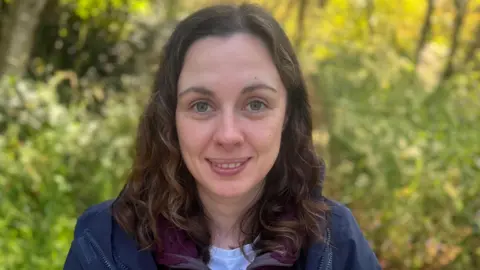 BBC
BBCEarly birds may catch the worm - but it's the early volunteers who catch the birds.
And the ones that get caught in the 18-metre long, fine-mist nets strung high across a reed bed at Killycolpy, on the County Tyrone shores of Lough Neagh, will help researchers learn more about how wildlife on the lough is faring.
It is one of three Constant Effort Sites (CES) around the shores of the lough and a fourth in the Belfast Hills.
These sites are places where identical studies are carried out - the same number of studies, for the same length of time, in the same location over the same period of time each year.
'Blue-green algal crisis'

The sites are part of a huge national scheme run by the British Trust for Ornithology.
The details of the birds are recorded - weight, age and sex - before they are set free with the addition of a lightweight metal ring on their leg so their movement can be tracked should they be caught again.
After two years at Killycolpy, Lough Neagh Partnership ranger Ciara Laverty and the team have seen changes.
Last year, she said, they caught more than 90 sedge warblers but "we're seeing a bit less this year and out in the field".
"We're hearing other birds like grasshopper warblers wailing away, but this year we are seeing less sedge warblers, and talking to other people who have similar projects, it seems to be the same at their sites as well."
And they have been left with questions.
"There has been a lot of press about the blue-green algal crisis, we don't know how that's affecting our birds and other wildlife around the lough."
'Quiet this year'
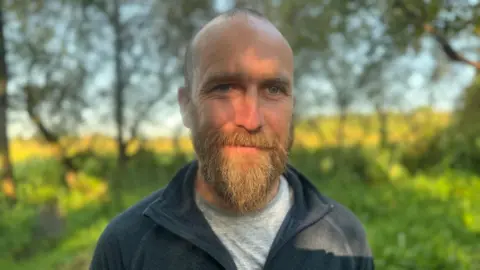
Fellow bird ringer Peter Kearns is worried.
"Last year, we had water rails, we had lots of birdsong, the dawn chorus was brilliant.
"But it is extremely noticeable how quiet it is this year.
"It's saddening, it's worrying and I can't wait to see the bigger trends come together and see if it is site-specific or whether it is lough-wide or nationwide."
While it can flag concerns, the work also helps shed light on the lives of these birds.
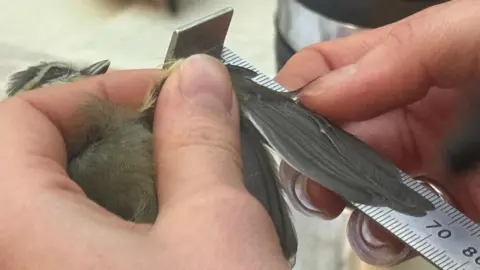
One reed warbler has consistently returned to the study site at Traad for six years, travelling thousands of miles to and from sub-Saharan Africa every year.
The report, from the Traad site, also highlighted the number of retraps - of the 421 birds caught there, 71 had previously been ringed at the site.
Along with the figures from the other sites - 29 birds out of 215 at Portmore and nine birds out of 259 at Killycolpy - that tells the teams that birds are choosing to return to these areas for breeding or onward migration.
The Belfast Hills site at Mullaghglass saw 65 retraps out of 272 birds counted, spanning 25 species.
Supporting those species to encourage them is a key part of the work for staff and volunteers.
'Flagship project in the British Isles'
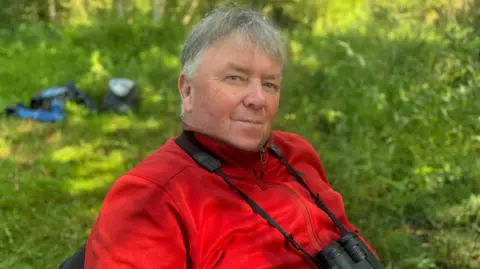
Aidan Crean has been involved in bird-ringing for three decades and has participated in all four of the Constant Effort Sites.
"You're getting data in abundance, productivity and survival, you're building up a substantial piece of data on the birds, the breeding birds of your site.
"So it's probably the flagship project for bird conservation in the British Isles."
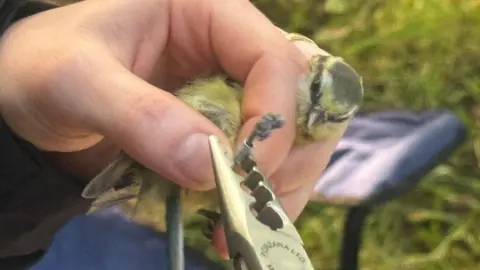
He has noticed a "visible decline" in the bird life of the lough.
"It just tells us that we have a situation, as the famous Northern Ireland saying goes.
"We all know about the algae, and we all know it's been studied and analysed, and that's great, but we have to step up.
"We all have to step up, I think; we have to be responsible."
